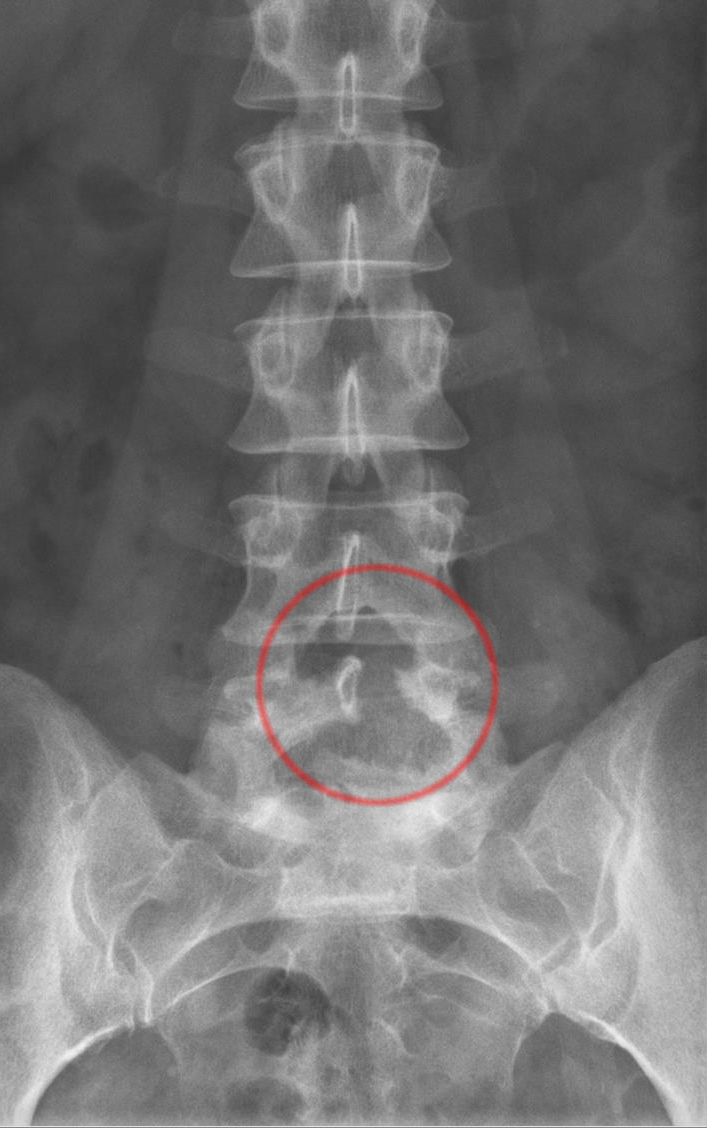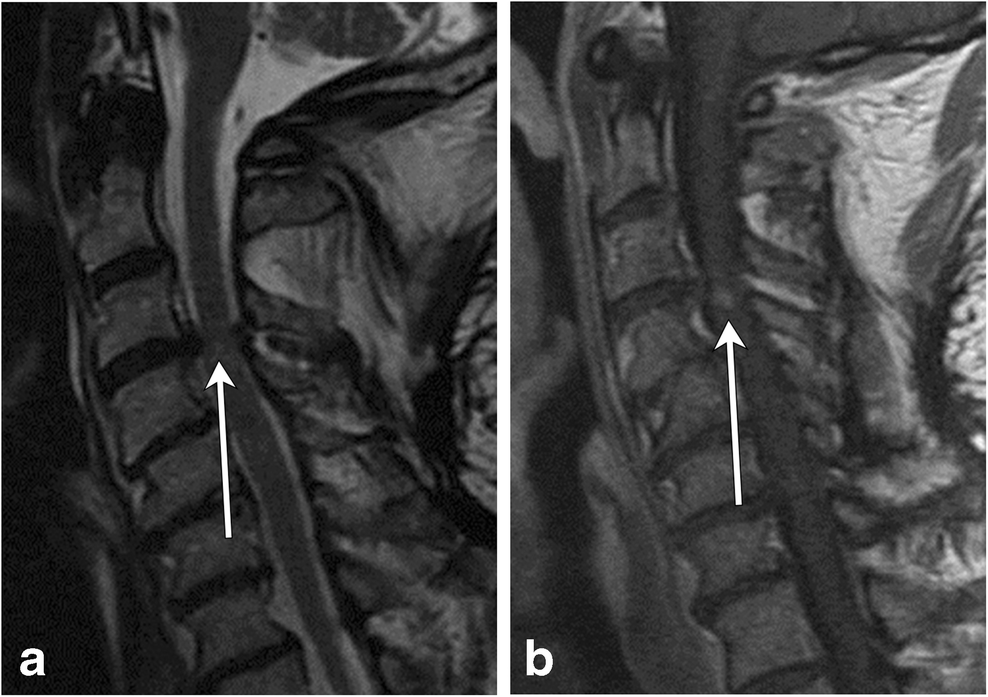Spinalkanalstenose


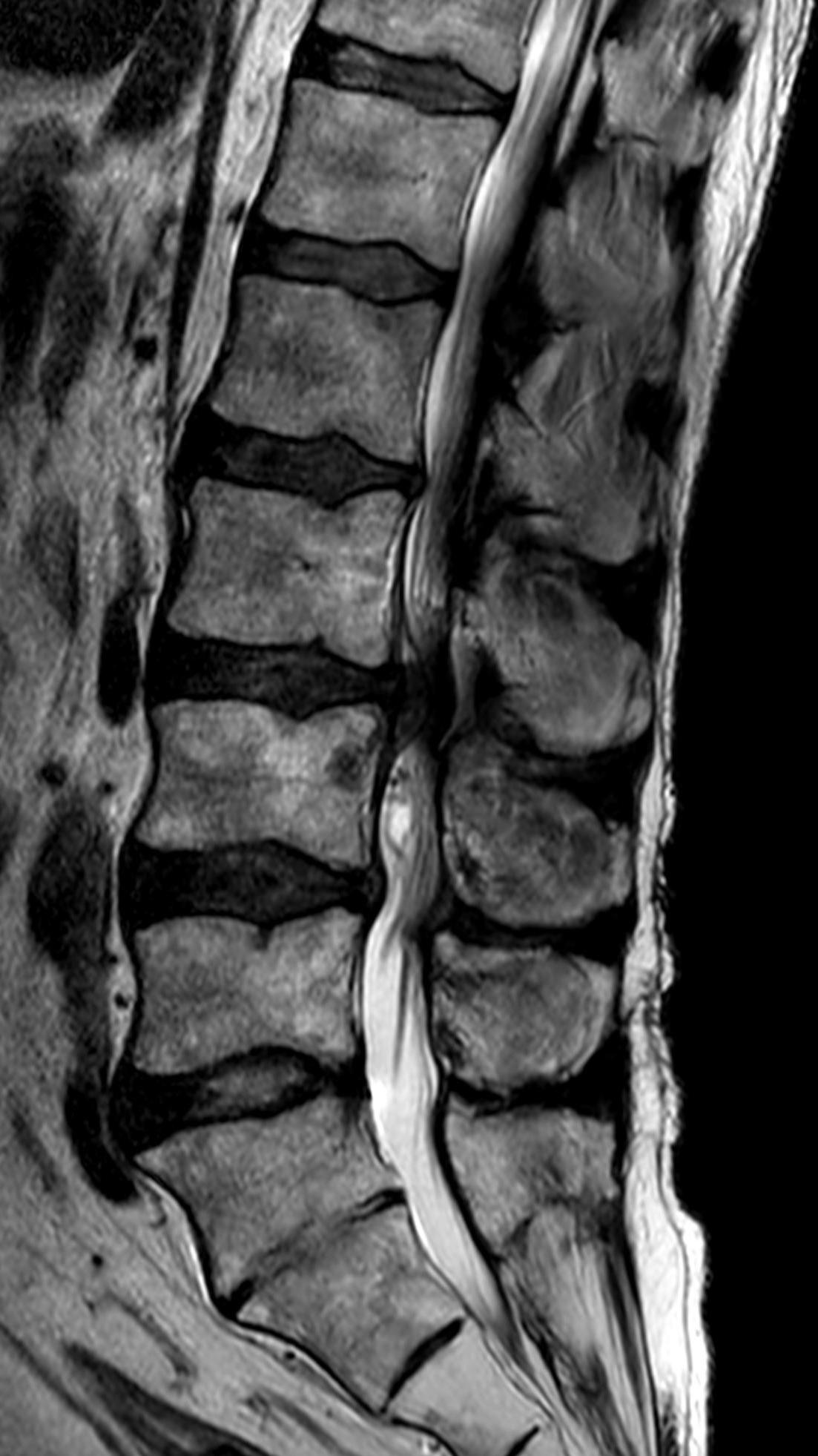



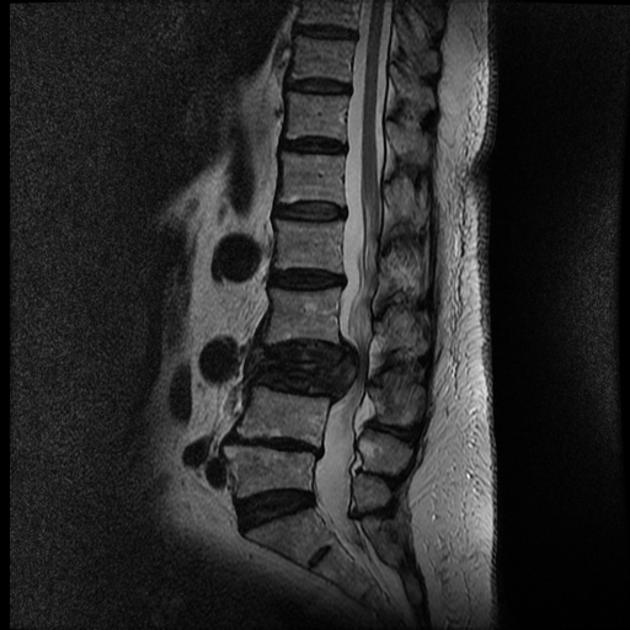
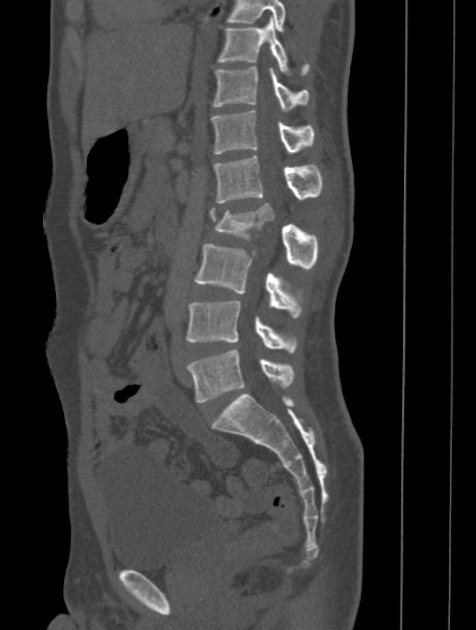

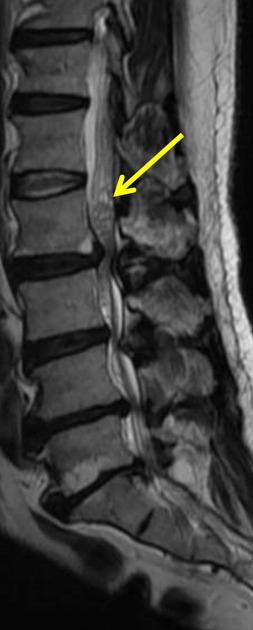
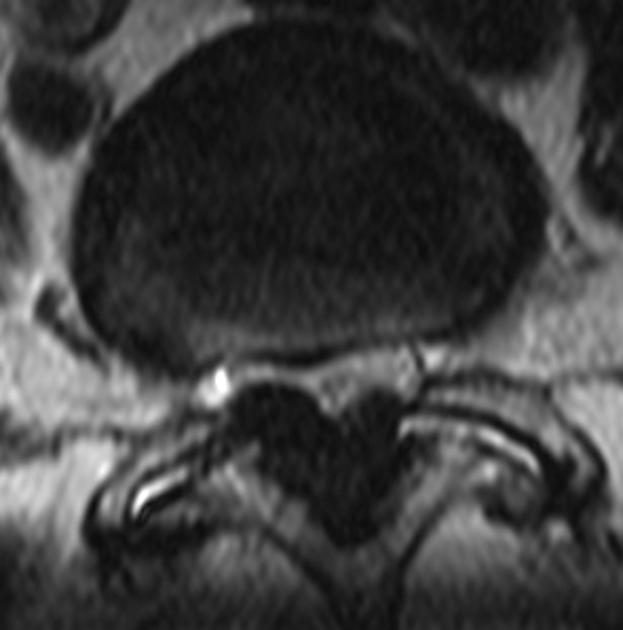
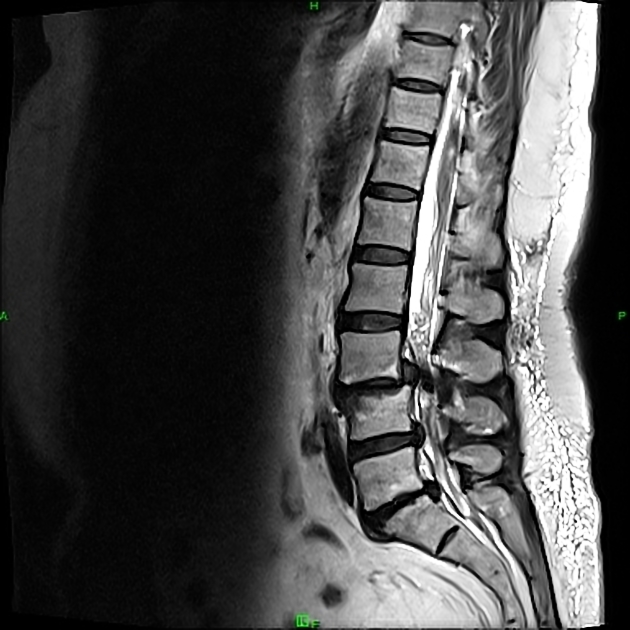
 nicht verwechseln mit: foraminale Stenose
nicht verwechseln mit: foraminale StenoseSpinal stenosis is a condition in which a portion of the spinal canal narrows to the point at which it can exert pressure on the nerves that travel through the spine.
Spinal stenosis is not to be confused with foraminal stenosis which is the narrowing of the foramina with subsequent compression of the nerve roots.
Epidemiology
The most commonly affected area is the lumbar spine (see lumbar spinal stenosis), followed by the cervical spine.
Men are more affected than women (except in the case of degenerative spondylolisthesis). Prevalence increases with age -most newly diagnosed patients are over the age of 50 years .
Pathology
Etiology
The causes of spinal stenosis can be divided into two groups :
- facet osteophytes
- posterior vertebral body osteophytes (uncinate spurs)
- spondylolisthesis
- herniated or bulging discs
- hypertrophy or bulking of the ligamentum flavum
- synovial facet cysts
- epidural lipomatosis
Acquired causes are more common than congenital ones, with the most common cause being osteoarthritis. Other causes include :
- injuries: may fracture or inflame a part of the spine
- tumors: spinal lesions, both benign and malignant, may cause spinal stenosis by compressing the cord
- Paget disease of bone: a condition where bones grow abnormally large and brittle; when it involves a vertebra, there is resultant narrowing of the spinal canal and nerve compression
Classification
There are two main classification categories:
- etiologic classification:
- congenital - e.g. congenital lumbar spinal stenosis (some associated with achondroplasia)
- acquired
- arthritic changes
- iatrogenic
- traumatic
- inflammatory
- anatomic classification
- central - cross-sectional area < 100 mm or < 10 mm AP diameter on axial CT
- lateral - most commonly due to osteophyte formation
- foraminal - between the medial and lateral border of the pedicle
- extraforaminal - lateral to the lateral edge of the pedicle
Radiographic features
Plain radiograph
- standing AP and lateral may show nonspecific degenerative findings (disc space narrowing, osteophyte formation)
- less frequent are degenerative scoliosis and degenerative spondylolisthesis
- flexion/extension radiographs may show segmental instability and subtle degenerative spondylolisthesis
Myelography
Plain radiographic myelography provides dynamic information such as the degree of cutoff when a patient performs extension.
CT myelography
Findings may include:
- central and lateral neural element compression
- bony anomalies
- bony facet hypertrophy
MRI
Findings may include:
- central stenosis, with the thecal sac measuring < 100 mm in area
- obliteration of perineural fat and compression of lateral recess or foramen
- facet and ligament hypertrophy
- spinal stenosis may be incidentally discovered in asymptomatic patients
Siehe auch:
- Spondylolisthesis
- Spondylarthrose
- Laminektomie
- Ligamentum-flavum-Hypertrophie
- Spondylolyse
- Hemilaminektomie
- Laminoplastie
- Ossifikation der Ligamenta flava
- Myelopathie durch spinale Enge
- Einengung Neuroforamen
und weiter:
- Kaudaredundanz
- Myelonkompression
- Morbus Baastrup
- zervikale Myelopathie
- cervical canal stenosis
- hypertrophe Spondylarthrose
- Myelomalazie
- Spondyloptose
- lumbale Spinalkanalstenose
- interspinöser Spreizer bei spinaler Stenose
- Hyporeflexie
- baastrup syndrome with marked enhancement
- Schweregrad Spondylolithesis nach Meyerding
- Spinalkanalstenose Röntgenbild

 Assoziationen und Differentialdiagnosen zu Spinalkanalstenose:
Assoziationen und Differentialdiagnosen zu Spinalkanalstenose:




